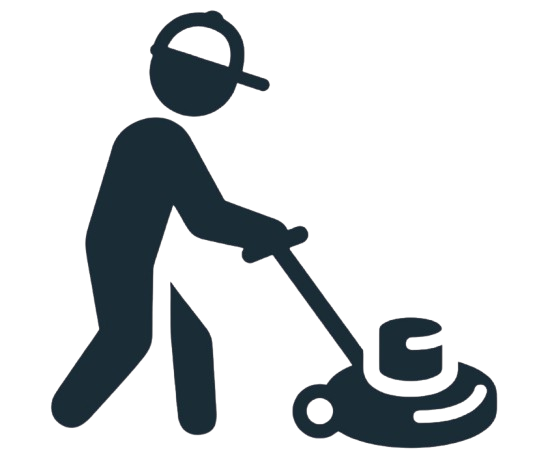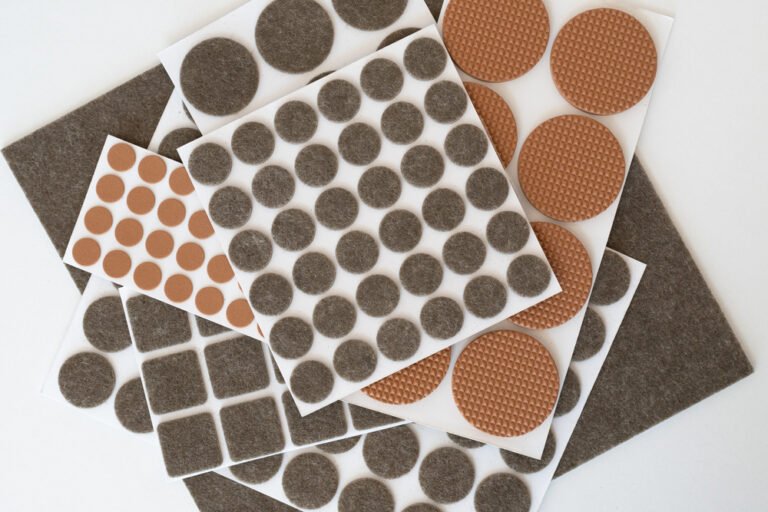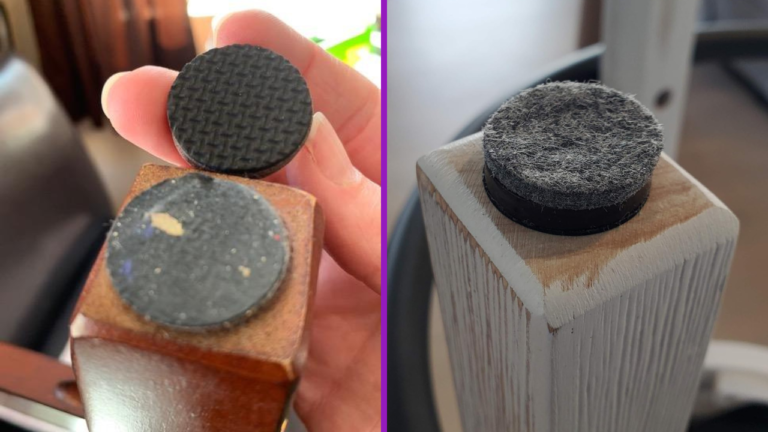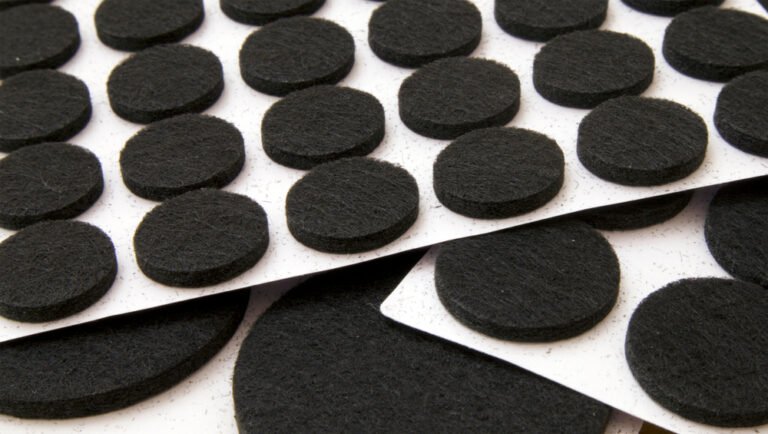A comprehensive introduction to felt pads, covering their purpose, types, and benefits for wood floors.
If you’ve recently invested in beautiful wood floors or had them for years and want to preserve their elegance, you might ask yourself how to protect them from daily wear and tear. One small, simple accessory can make a big difference: felt pads. These little pads are designed to adhere to the bottoms of furniture legs, preventing scratches, scuffs, and other damage to your wood floors. However, not all felt pads are created equal, and essential factors must be considered when selecting, applying, and maintaining them.
In this comprehensive guide, we’ll cover everything you need to know about felt pads for wood floors, from their importance to the types available and tips on using them effectively.
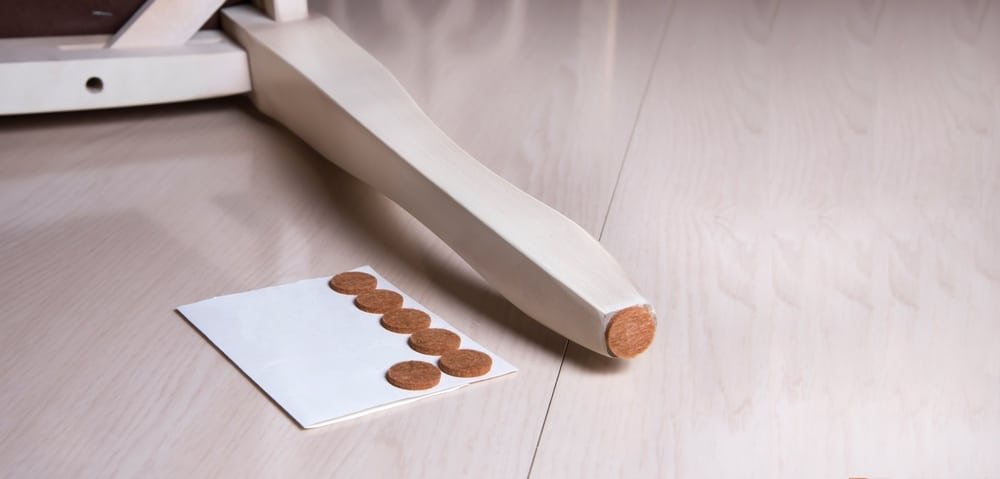
Why Use Felt Pads for Wood Floors?
Wood floors are a significant investment, and their appearance and durability should be prioritized. Here’s why felt pads are essential for protecting your floors:
- Scratch Prevention: Furniture legs can easily scratch or scuff wood floors, especially when moved. Felt pads provide a protective barrier that reduces friction between furniture and flooring.
- Reduced Noise: Felt pads help dampen the sound of chairs and tables sliding across the floor, making your home quieter.
- More effortless Furniture Movement: Felt pads make it easier to slide furniture for cleaning or rearranging without damaging the floor, perfect for pieces that need regular moving.
- Prolonged Floor Lifespan: By minimizing direct contact between heavy furniture and your wood floors, felt pads can extend the life of your flooring, preserving its value and aesthetic appeal.

Types of Felt Pads for Wood Floors
Not all felt pads are the same. Here’s a breakdown of the main types to help you choose the right fit for your home:
1. Self-Adhesive Felt Pads
- Description: These are the most common types of felt pads. They come with a sticky backing that adheres directly to the bottom of the furniture legs.
- Best For: Chairs, sofas, tables, and other light-to-moderate weight furniture.
- Pros: Easy to apply and affordable.
- Cons: The adhesive can wear out over time, especially with frequent movement.

2. Nail-On Felt Pads
- Description: These pads have a small nail or screw that attaches the felt directly to the furniture leg, providing a more secure hold.
- Best For: Heavier furniture such as dining tables, sofas, or large dressers.
- Pros: More durable and long-lasting; they don’t fall off as quickly as adhesive pads.
- Cons: Installation requires tools, and they can be difficult to remove.
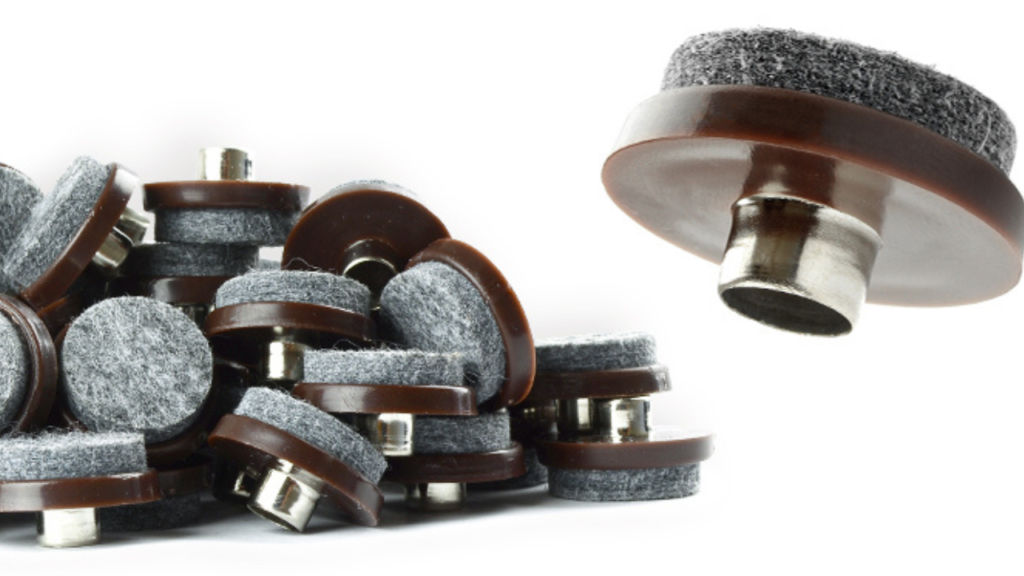
3. Tap-On Felt Pads
- Description: Similar to nail-on pads, these are tapped or hammered into the base of furniture legs and are often made of a more complex, durable material.
- Best For: Heavy-duty furniture like cabinets, bookshelves, and oversized chairs.
- Pros: Strong attachment, ideal for high-traffic or heavy-use furniture.
- Cons: Installation can be tricky, and they can be challenging to replace if damaged.
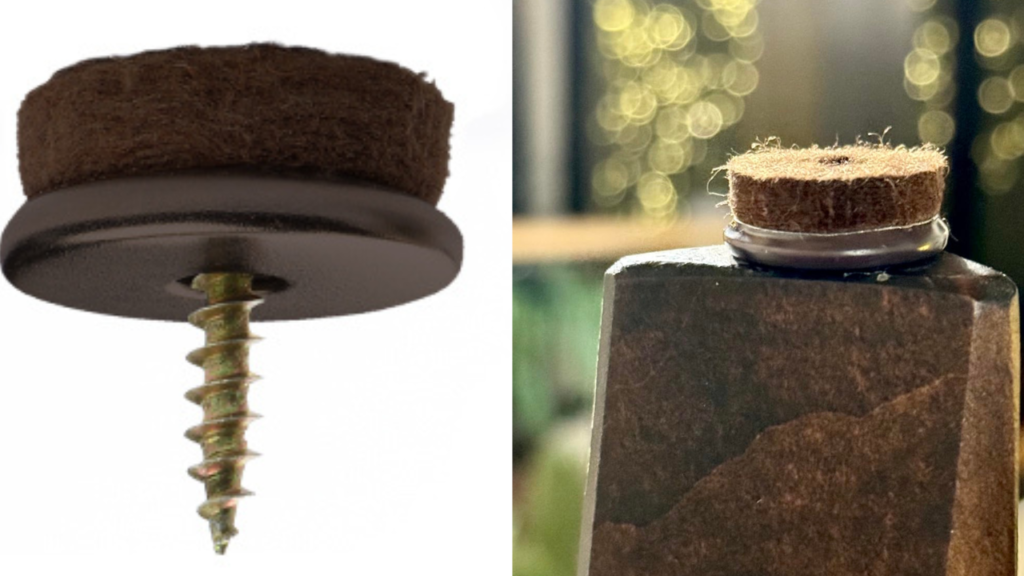
4. Slip-On Felt Pads
- Description: These pads are designed like small caps that slip onto the bottoms of furniture legs. They’re often a combination of rubber and felt.
- Best For: Chairs, stools, and lightweight furniture with legs that fit within the cap.
- Pros: Easy to apply and remove; won’t leave residue.
- Cons: Limited to furniture with standard-sized legs; not suitable for heavy furniture.

5. Custom Cut Felt Pads
- Description: These are felt sheets with adhesive backing that you can cut to any size or shape.
- Best For: Unusually shaped furniture legs or items that need custom-sized pads.
- Pros: Flexible and customizable; can be used on virtually any piece of furniture.
- Cons: Cutting and sizing take extra time and effort.
How to Choose the Right Felt Pads
When selecting felt pads, keep the following criteria in mind to ensure maximum protection and durability:
- Furniture Type and Weight: Self-adhesive pads are usually sufficient for lightweight furniture. However, heavier furniture may require nail-on or tap-on felt pads for a more secure fit.
- Floor Traffic: In high-traffic areas, such as dining and living rooms, go for high-quality, durable felt pads that won’t wear out quickly. Nail-on or slip-on pads can be good choices here.
- Furniture Leg Shape: Some furniture has oddly shaped legs that may not work well with standard-sized pads. In this case, opt for custom-cut felt pads or slip-on styles that can adapt to the shape.
- Pad Thickness: Thicker pads offer more protection but may slightly elevate furniture, affecting stability. If your floors are especially prone to scratches, choose a thicker option.
- Quality of Adhesive: If you’re going for self-adhesive pads, look for high-quality adhesives that won’t come off quickly with movement.

Installing Felt Pads Correctly
Correct installation ensures that felt pads work effectively and stay in place. Here’s a step-by-step guide for each type:
Self-Adhesive Pads
- Clean the Surface: Rub alcohol on the bottom of the furniture leg to remove dirt or residue.
- Peel and Stick: Remove the backing from the felt pad and firmly press it onto the leg.
- Hold Firmly: Hold the pad for a few seconds to ensure it adheres properly.
Nail-On and Tap-On Pads
- Mark Placement: Position the pad on the centre of the furniture leg.
- Hammer Carefully: Tap the nail or screw gently but firmly into the furniture leg, ensuring the felt pad is secure and even.
Slip-On Pads
- Choose the Right Size: Ensure the cap fits snugly onto the leg of the furniture.
- Slip On: Simply place the pad over the leg and press down until it fits securely.
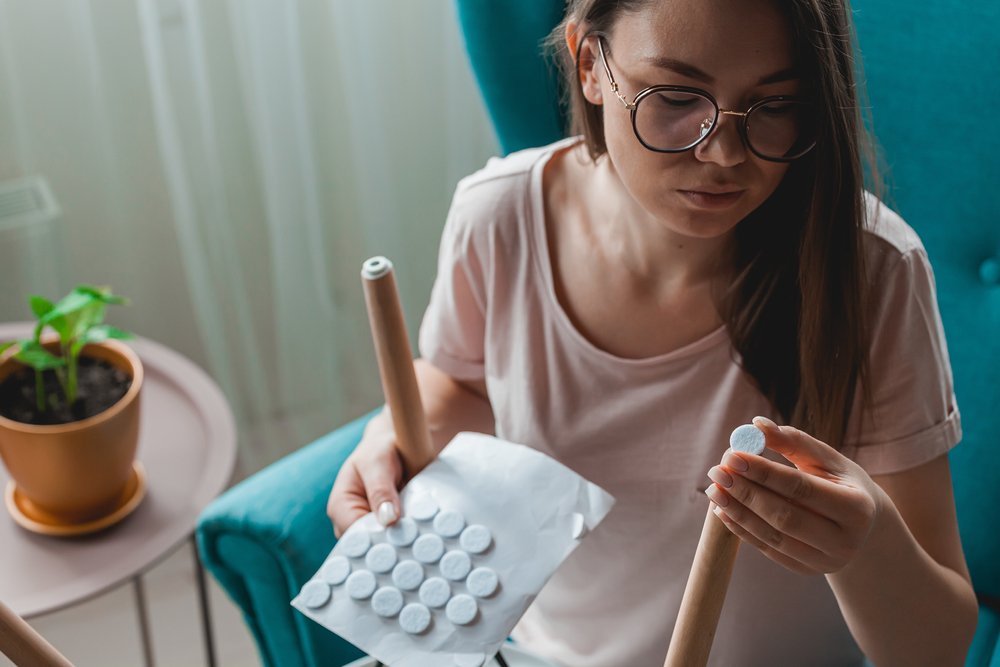
Maintenance Tips for Felt Pads
To ensure your felt pads continue to protect your wood floors, follow these simple maintenance steps:
- Check Regularly: Felt pads can wear down over time, especially on frequently moved furniture like dining chairs. Inspect them every few months and replace them as needed.
- Clean Pads: Dirt and debris can accumulate on felt pads, making them less effective and potentially scratching your floors. Use a vacuum or a damp cloth to clean the pads.
- Reapply Adhesive as Needed: If self-adhesive pads start to come loose, you may be able to reapply them with a small amount of solid adhesive or glue for a temporary fix.

Common Mistakes to Avoid with Felt Pads
Even though felt pads are relatively simple to use, some common mistakes can reduce their effectiveness:
- Using the Wrong Size: Small pads on large furniture legs won’t provide adequate coverage, so always choose a size that fits the leg properly.
- Skipping the Cleaning Step: Installing felt pads on a dirty surface can weaken the adhesive, causing the pads to fall off sooner.
- Not Replacing Worn Pads: When pads get too thin, they won’t offer much protection. Keep an eye on their condition, especially on heavily used furniture.

FAQs About Felt Pads for Wood Floors
Q: Do felt pads leave residue on wood floors?
A: High-quality felt pads shouldn’t leave a residue. However, lower-quality adhesive pads might, especially if left on for a long time or used on unfinished wood floors.
Q: Can I use felt pads on tile or laminate floors?
A: Yes, felt pads are suitable for various types of hard flooring, including tile, laminate, and vinyl, as they provide similar protection against scratches and scuffs.
Q: How often should I replace felt pads?
A: It depends on usage, but typically, every 6–12 months is a good rule of thumb. Inspect them regularly to check for signs of wear.
Q: What if my felt pads keep falling off?
A: Make sure the surface is clean and dry before applying, and consider using a stronger adhesive if they persistently fall off. For heavy furniture, nail-on or tap-on pads may be a better option.

Final Thoughts: Felt Pads as a Simple Solution for Floor Protection
Felt pads might seem like a small and simple addition, but they’re a powerful tool for preserving the beauty and longevity of your wood floors. By reducing scratches and dampening noise and making furniture easier to move, felt pads offer an affordable way to protect your investment.
So, whether you want to add them to your dining chairs, sofas, or heavy cabinets, choosing the right type of felt pad and following proper installation and maintenance techniques will ensure your floors stay pristine for years.
